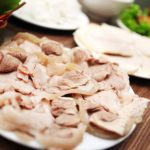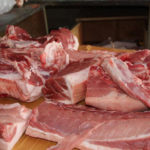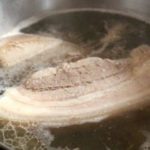Why does boiled pork have bubbles?
Actually, the bubbles that appear when boiling or stewing meat are not due to toxins or chemicals in the pork. They are caused by the soluble protein in the water, which solidifies and rises to the surface when the water boils, causing it to bubble. These bubbles can be considered as part of the impurities present in the meat and bones.
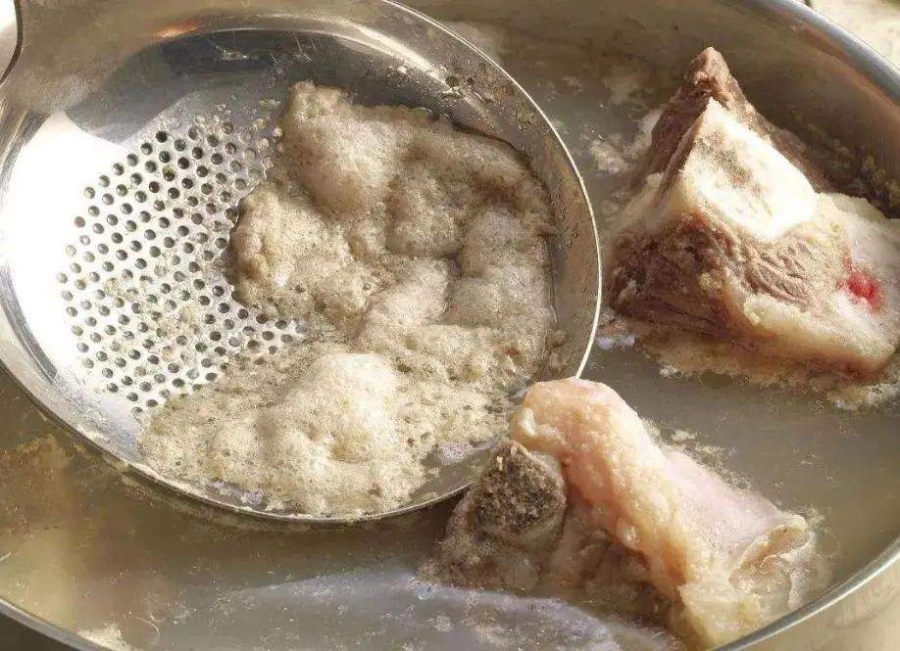
During the slaughter, transportation, and storage process, the meat and bones may come into contact with dirt and sand, but it cannot be said that the meat is contaminated with chemicals.
Experts explain that when cooking, if you feel that the meat seems dirty, it is correct to skim off the bubbles. When the protein coagulates, the impurities cling to the solidified protein. To remove impurities from the meat and make it more delicious when cooked, it is recommended to rinse the meat several times with clean water or diluted salt water. Once the meat has been rinsed, you can proceed to boil it.
When the meat is boiled, even though it contracts, it does not harbor any impurities because it has been thoroughly cleaned. It is advisable to cook the meat until it is soft, and when the first layer of bubbles appears, it is recommended to skim them off. This can help minimize the harmful effects caused by aromatic amino acids.
How to boil pork to make it tender and odorless
The secret to cooking delicious, tender, and odorless boiled pork is to boil it twice. For the first boil, you can add 1 teaspoon of vinegar, a few thin slices of ginger, and 1/2 teaspoon of salt to the boiling water.
Then, you can put the pork into the boiling water for about 2 minutes, then remove it and rinse it again. This method helps eliminate any unpleasant odor from the meat. The addition of vinegar and salt also helps the meat retain its whiteness and cleanliness.
For the second boil, you can put the pork into the pot from the beginning, fill it with water, add a few crushed scallions, and season it to enhance the flavor. Boil the meat until it is cooked. After boiling the meat for 5-10 minutes and noticing that the fat is slightly transparent, you can use a fork to test if the meat is done.
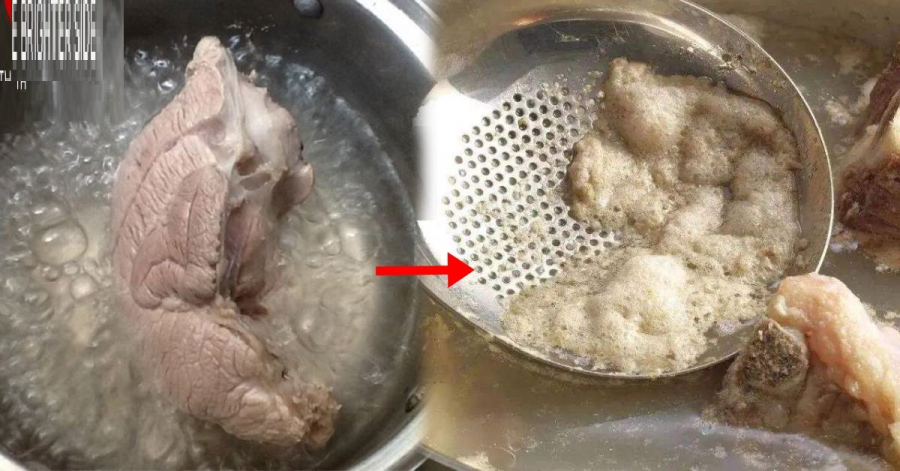
The boiling time will depend on the size of the meat. If the meat is thick and large, it may take a long time to cook thoroughly. In this case, it is best to slice or score the meat to make it more tender and prevent it from being tough. Remember to skim off any foam that appears during cooking to keep the meat clean.
Once the pork is cooked, you can remove it from the pot, let it drain, and wait for it to cool down before slicing it into small, bite-sized pieces. It is recommended to cut the boiled meat into thin, small pieces to avoid toughness.
Some things to note:
To make high-quality boiled pork, the first thing you need to consider is choosing fresh and clean meat. You should choose meat that is clear in origin, with a fresh pink color, firm texture, good elasticity when pressed, and a dry cut surface. Pork belly or pork leg meat is suitable for boiling because they have both lean meat and fat, making the meat tender and delicious.
The preparation process also determines the taste of the boiled meat. You should rub the meat with lime and salt or soak it in diluted salt water, then rinse it well.
Pre-boiling the meat in hot water at 70-80 degrees Celsius with a little ginger and salt helps remove impurities. After that, you can skim off any impurities and wash the meat again. This not only makes the meat fragrant but also allows you to use the broth for making soup.
Many people wonder whether to boil meat in boiling water or cold water. In fact, each method has its own advantages and disadvantages.
If you boil the meat in boiling water, the quick heat causes the meat and proteins on the surface to quickly solidify and seal, making it difficult for impurities to escape. However, the meat will taste better because it retains more nutrients.
On the other hand, boiling the meat in cold water from the beginning helps remove impurities. You should remember to skim off any foam that appears regularly. With this method, you can use the fragrant broth for cooking other dishes, but the meat may not be as flavorful as when boiled in boiling water.
How to make delicious pickled cabbage
In the scorching heat of the sun, enjoying a bowl of soup made with pickled vegetables and pork ribs or a meal of beef stew with preserved fish or mackerel, alongside braised carp, is a delightful experience. Whether it’s dưa nấu sườn, dưa kho cá ngừ, cá đối, or cá chép, these dishes are all incredibly easy to savor.

























